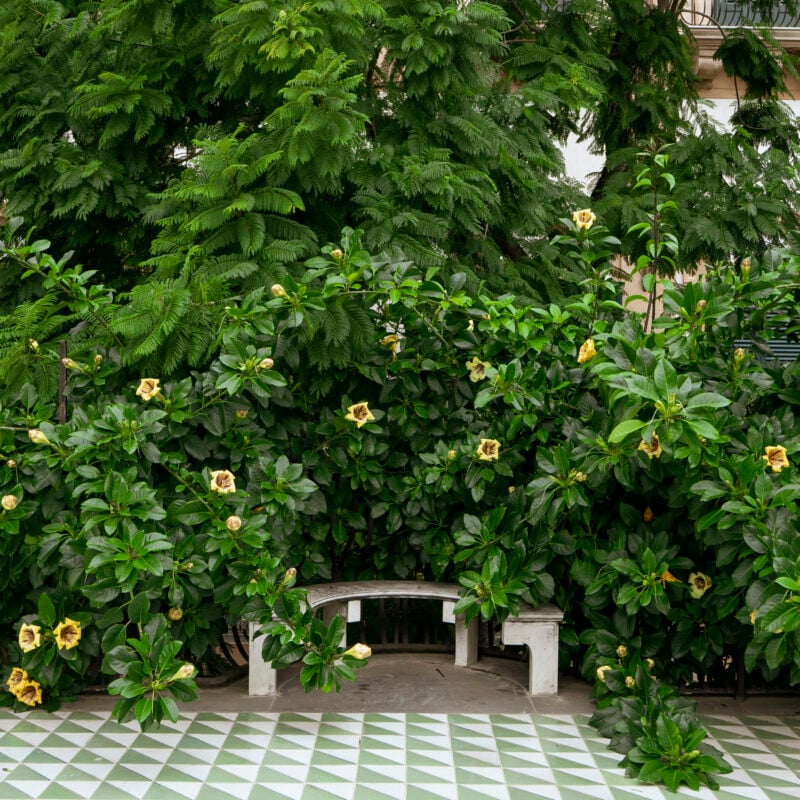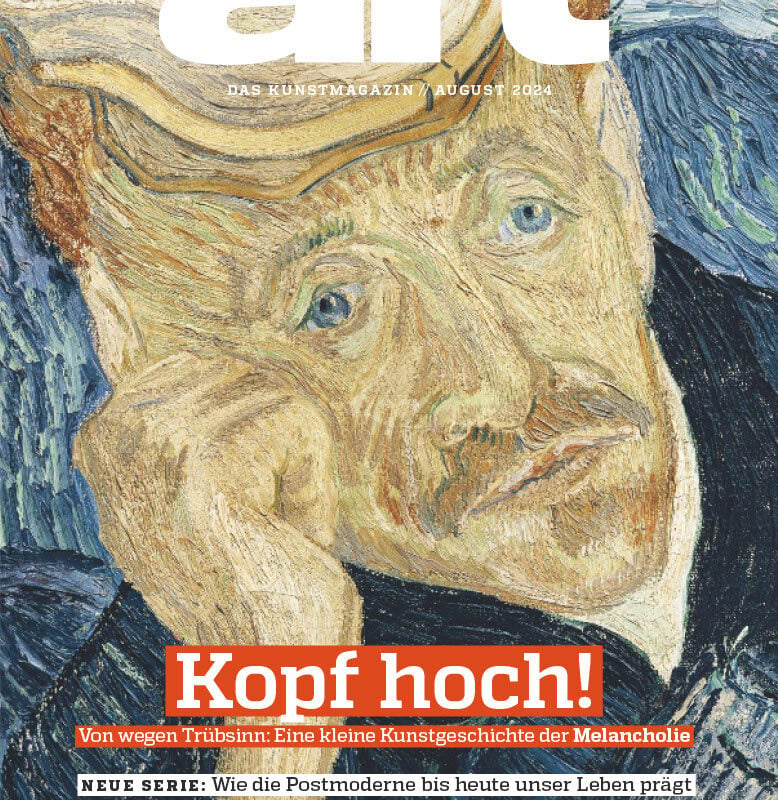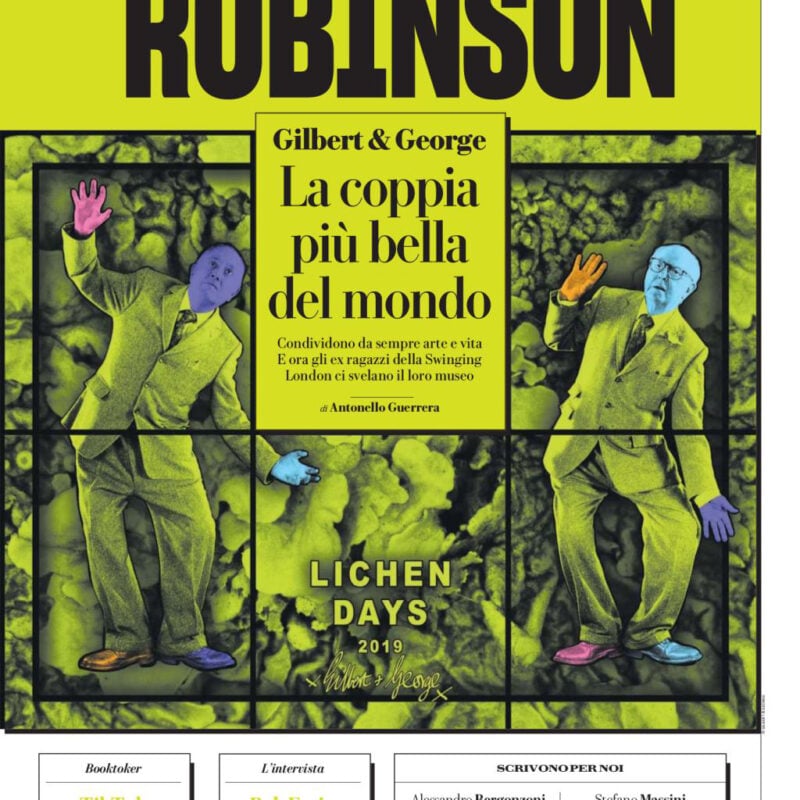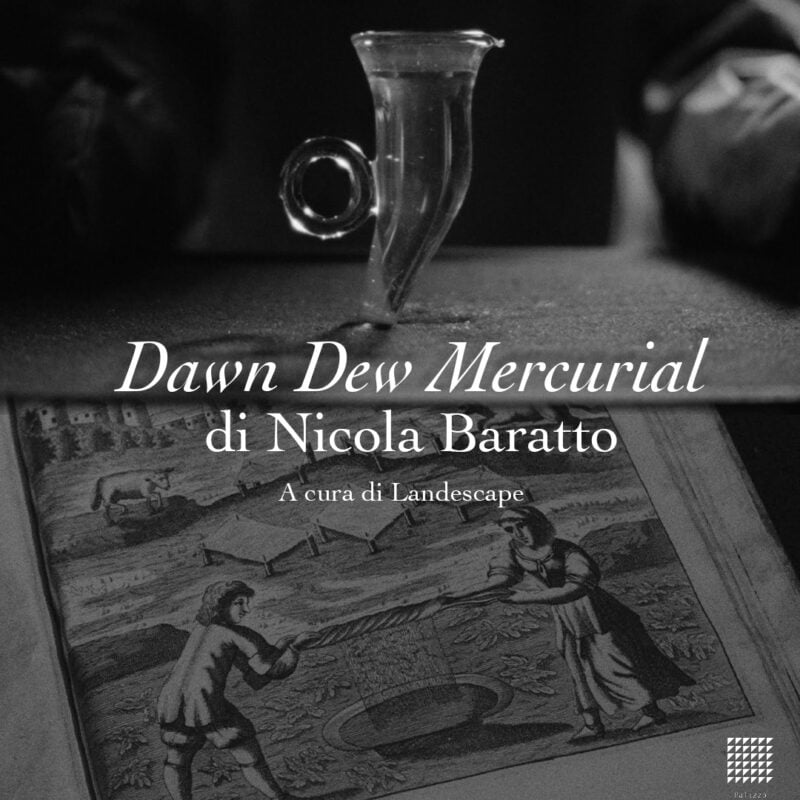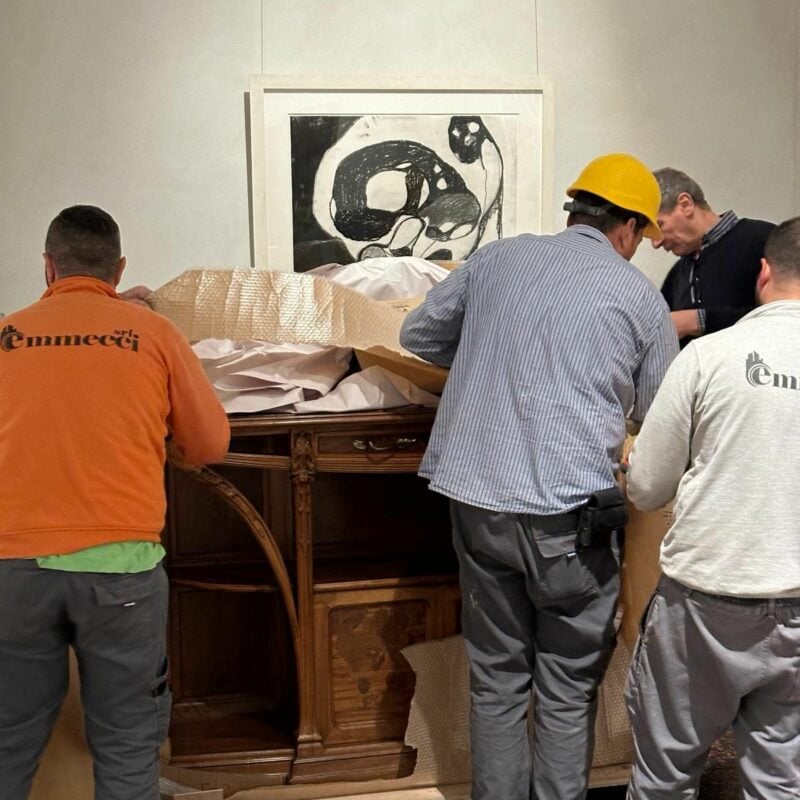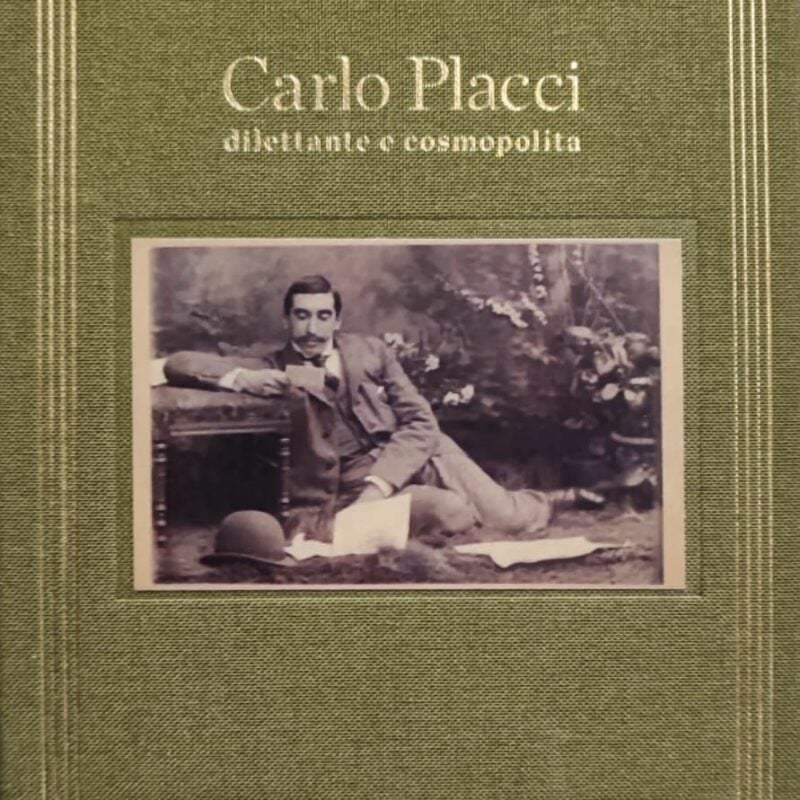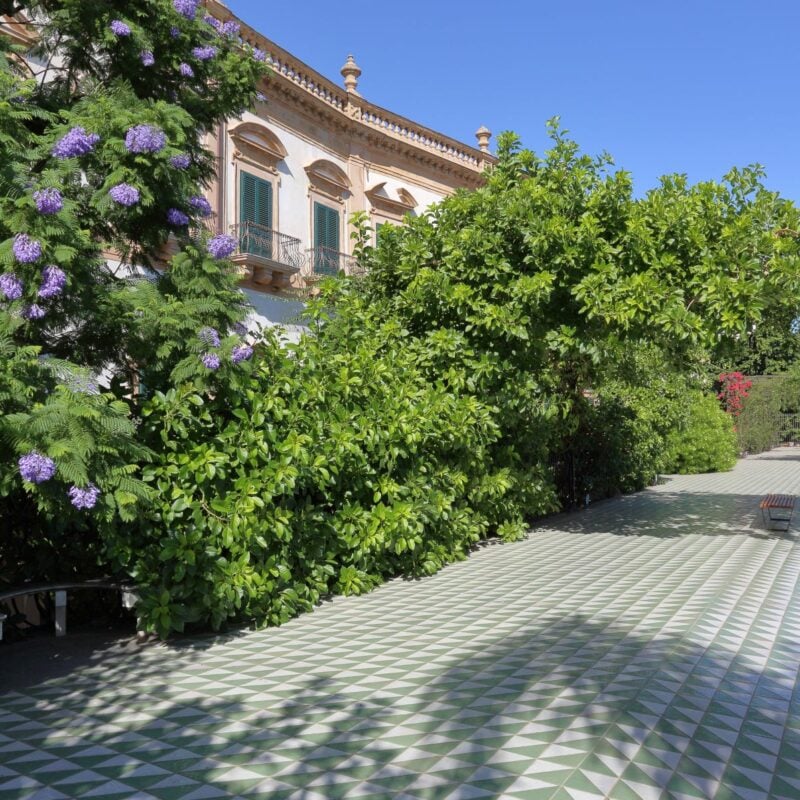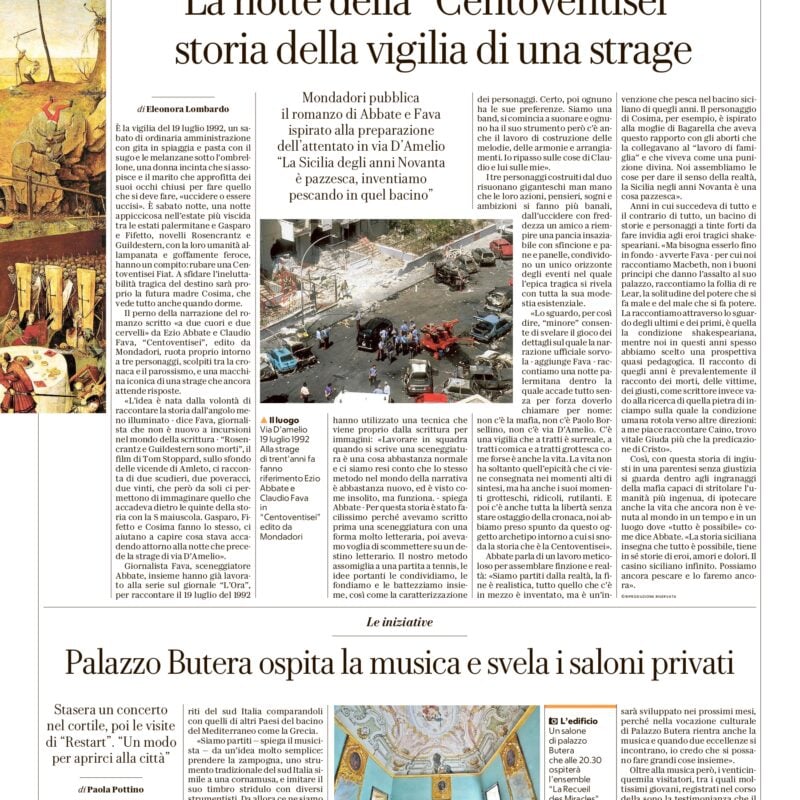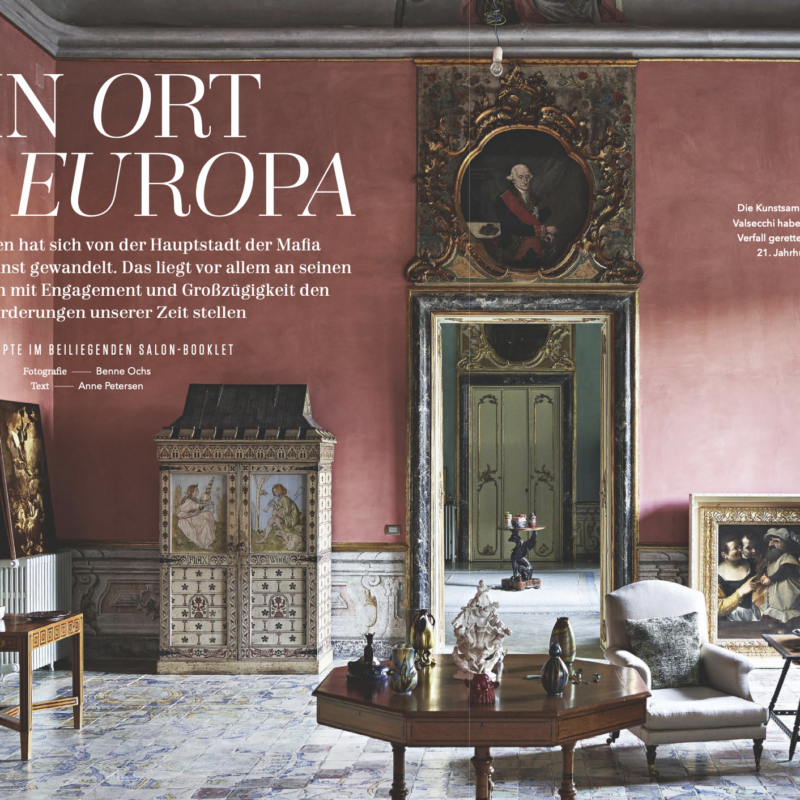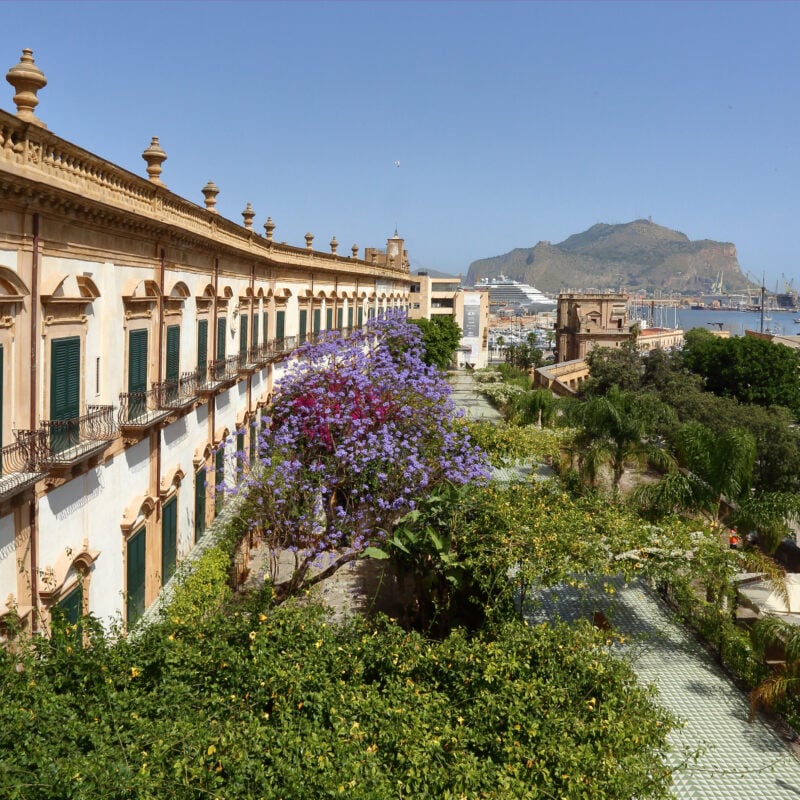
News
-
 News
NewsOpening hours (14 January – 27 February 2025)
From 14 January to 27 February, the opening hours of […]
7 January 2025 -
 Video
VideoThe London art week symposium – “Conversations on...
On Monday 2 December 2019, London Art Week launched the […]
28 January 2020 -
 Video
VideoCogito, un aperitivo per la mente
Live recording of an event on the first courtyard of […]
27 June 2018 -
 Press
PressART – Das Kunstmagazin
1 August 2024 -
 Press
PressRobinson (La Repubblica) – 28/01/2023
28 January 2023 -
 News
NewsPresentation “Dawn Dew Mercurial” by Nicola Baratto
30 May 2024 -
 News
NewsPresentation of the volume “Anime slave” by Tessa...
21 May 2024 -
 News
NewsNew works at Palazzo Butera
10 April 2024 -
 News
NewsPresentation of the volume on Carlo Placci by Giorgio Villani
13 March 2024 -
 News
NewsCelebration and holiday times 2024
1 January 2024 -
 Press
PressLa Repubblica di Palermo – 21/07/2022
21 July 2022 -
 Press
PressSalon – primavera 2021
13 June 2024

